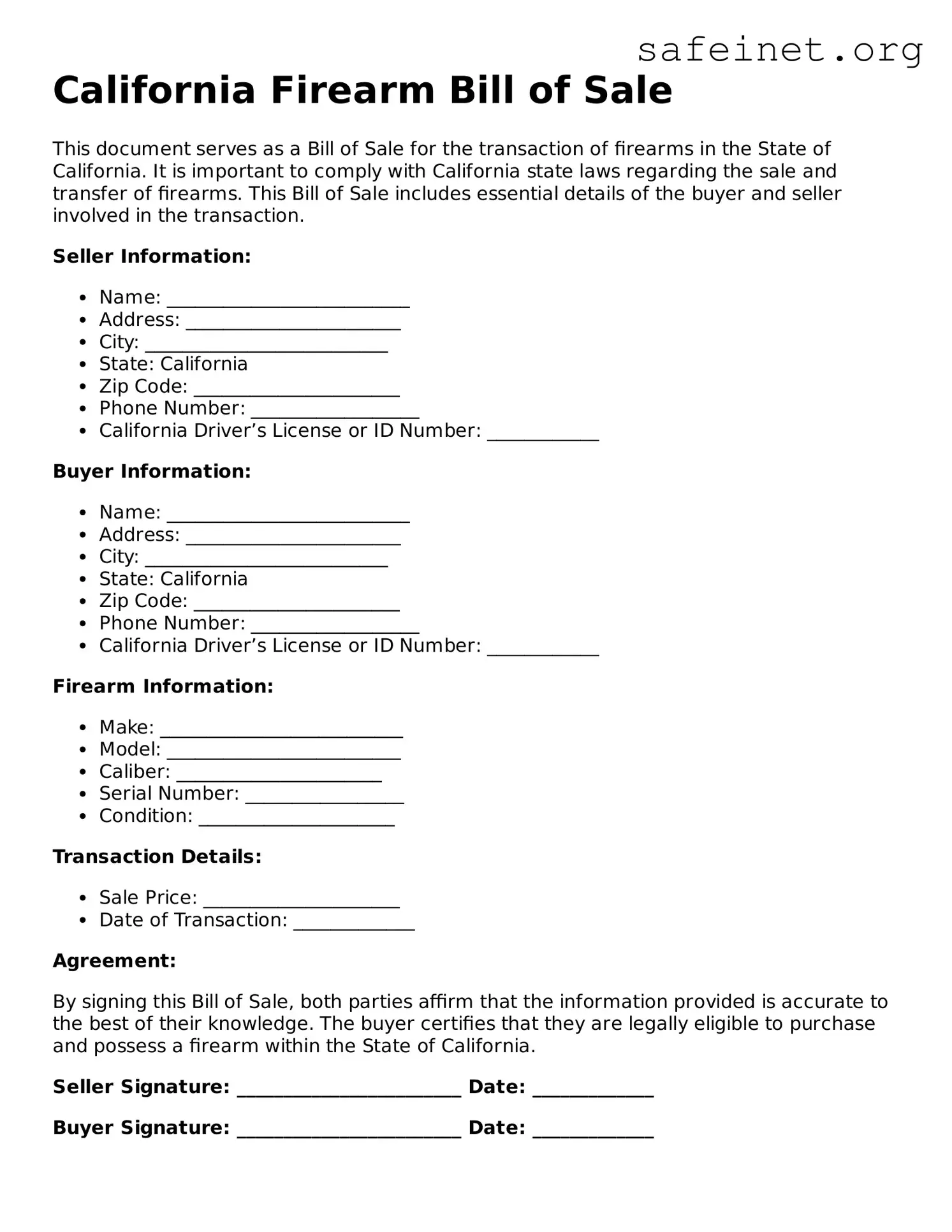What is a California Firearm Bill of Sale form?
The California Firearm Bill of Sale form is a legal document that records the sale or transfer of a firearm between two parties. It includes essential details such as the names of the buyer and seller, the firearm's description (make, model, and serial number), and the date of the transaction. This form helps ensure that the transfer complies with state regulations and provides proof of ownership after the sale is completed.
Is a Firearm Bill of Sale required in California?
While a Bill of Sale is not legally required to complete a firearm transaction in California, it is highly recommended. A Bill of Sale serves as a record of the sale, which can protect both the buyer and the seller in case of future disputes or legal inquiries regarding the firearm. Additionally, California law requires a background check for purchases of firearms through licensed dealers, but private sales may not always have this requirement, making a Bill of Sale even more important.
What information should be included on the form?
The Firearm Bill of Sale should include specific information to be valid. Essential elements are the names and addresses of both the buyer and seller, the date of the transaction, a detailed description of the firearm (including make, model, caliber, and serial number), and the purchase price. Both parties should sign and date the document to confirm their agreement to the sale.
Can I create my own Firearm Bill of Sale form?
Yes, you can create your own Firearm Bill of Sale form, as long as it includes all necessary details outlined above. However, there are many templates available online that meet California's requirements. It may be prudent to use one of these templates to ensure all legal standards are met and to avoid missing critical information.
Do I need to have the Bill of Sale notarized?
Notarization is not required for the Firearm Bill of Sale in California. However, having the document notarized can add an extra layer of authenticity and serve as further protection for both parties involved. A notary public can verify the identities and signatures of the individuals, which may help in preventing future disputes.
What should I do with the completed Bill of Sale?
After completing the Bill of Sale, both the buyer and seller should keep a signed copy for their records. This documentation may be necessary to resolve any future questions regarding ownership or the legality of the firearm. Proper record-keeping is crucial, particularly because state and federal laws concerning firearms ownership can change.
